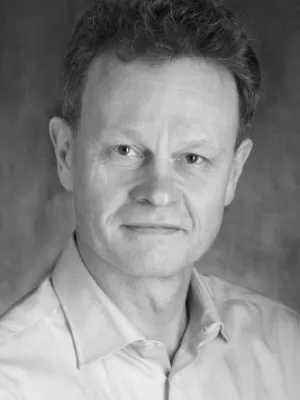
Anders Irbäck
Professor

Stability and Local Unfolding of SOD1 in the Presence of Protein Crowders
Author
Summary, in English
Using NMR and Monte Carlo (MC) methods, we investigate the stability and dynamics of superoxide dismutase 1 (SOD1) in homogeneous crowding environments, where either bovine pancreatic trypsin inhibitor (BPTI) or the B1 domain of streptococcal protein G (PGB1) serves as a crowding agent. By NMR, we show that both crowders, and especially BPTI, cause a drastic loss in the overall stability of SOD1 in its apo monomeric form. Additionally, we determine chemical shift perturbations indicating that SOD1 interacts with the crowder proteins in a residue-specific manner that further depends on the identity of the crowding protein. Furthermore, the specificity of SOD1-crowder interactions is reciprocal: chemical shift perturbations on BPTI and PGB1 identify regions that interact preferentially with SOD1. By MC simulations, we investigate the local unfolding of SOD1 in the absence and presence of the crowders. We find that the crowders primarily interact with the long flexible loops of the folded SOD1 monomer. The basic mechanisms by which the SOD1 β-barrel core unfolds remain unchanged when adding the crowders. In particular, both with and without the crowders, the second β-sheet of the barrel is more dynamic and unfolding-prone than the first. Notably, the MC simulations (exploring the early stages of SOD1 unfolding) and the NMR experiments (under equilibrium conditions) identify largely the same set of PGB1 and BPTI residues as prone to form SOD1 contacts. Thus, contacts stabilizing the unfolded state of SOD1 in many cases appear to form early in the unfolding reaction.
Department/s
- Computational Biology and Biological Physics - Undergoing reorganization
- Biophysical Chemistry
- Computational Science for Health and Environment
- eSSENCE: The e-Science Collaboration
Publishing year
2019
Language
English
Pages
1920-1930
Publication/Series
Journal of Physical Chemistry B
Volume
123
Issue
9
Document type
Journal article
Publisher
The American Chemical Society (ACS)
Topic
- Other Physics Topics
- Biophysics
- Physical Chemistry
Status
Published
Research group
- Computational Science for Health and Environment
ISBN/ISSN/Other
- ISSN: 1520-6106